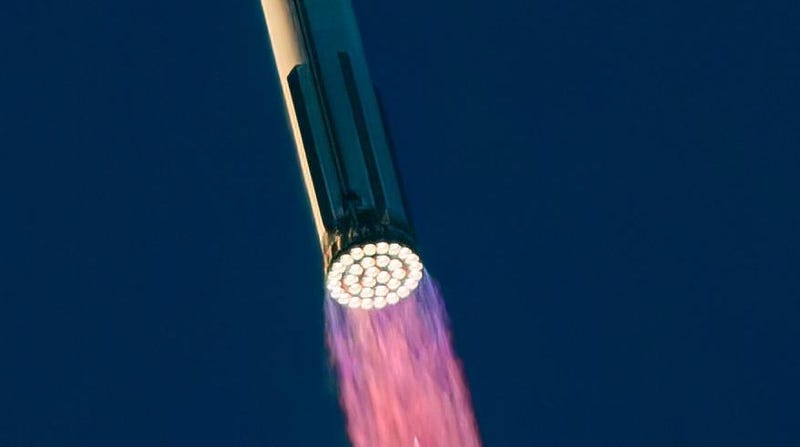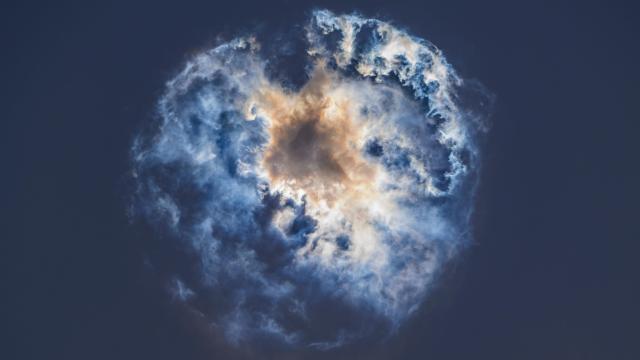The Federal Aviation Administration (FAA) has closed its investigation into the second Starship test flight, which SpaceX performed on November 18, 2023. With the inquiry concluded, SpaceX is now on track to advance its program, pending the necessary fixes.
Orbital Test Flight 2 (OFT-2) was a considerable improvement over the first test, done on April 20, 2023, which resulted in considerable damage to the launch pad and the surrounding area as well as the loss of the Starship rocket some four minutes into the flight. Nevertheless, OFT-2, which witnessed the in-flight destruction of both the Super Heavy booster and upper stage, prompted an FAA investigation.
As per the regulator’s guidelines, SpaceX led the mishap investigation, with the FAA keeping a close watch on the process to ensure compliance. The aerospace company identified the root causes of the failed test, resulting in 17 corrective actions, some of which have already been implemented. Starship, still in development, is a fully reusable spacecraft and rocket system designed for missions to Earth orbit, the Moon, Mars, and other locations in the solar system, and it’s set to seriously transform the aerospace industry.
This development means SpaceX is now a major step closer to the third test flight. But as the FAA made clear in its emailed statement, the “closure of the mishap investigation does not signal an immediate authorization of the next Starship launch.” For that to happen, SpaceX “must implement all corrective actions and receive a license modification from the FAA that addresses all safety, environmental and other applicable regulatory requirements.” That said, a test flight in March is not out of the question.
A rare update from SpaceX provided more information about the investigation and what went wrong during OFT-2.
Following stage separation, and as the booster began its descent stage, “several engines began shutting down before one engine failed energetically,” resulting in a chain of events that ultimately resulted in the destruction of the Super Heavy, the company explained. SpaceX identified filter blockage as the culprit, in which oxygen-rich liquid from the engines clogged the filters. This led to the shutdown of several engines and an explosion about three and a half minutes into the flight, while Starship was flying 56 miles (90 kilometers) over the Gulf of Mexico. SpaceX claims to have already implemented a fix.

As for the upper stage, it managed to free itself from the booster and fly for nearly seven minutes. Then, as part of the test, it vented extra liquid oxygen that was loaded for data collection purposes (this normally wouldn’t be done during a launch). However, a leak occurred during this venting, causing a fire and loss of communication with the flight computers. This led to the engines shutting down early and the self-destruct system ending the mission. The test ended as the upper stage reached an altitude of 93 miles (150 km), marking the first time a Starship vehicle reached outer space. To prevent a recurrence, SpaceX has “implemented hardware changes on upcoming Starship vehicles to improve leak reduction, fire protection, and refined operations associated with the propellant vent to increase reliability.” What’s more, a shift from the hydraulic steering of Raptor engines to an exclusively electric-based system should also remove “potential sources of flammability,” SpaceX added.
Of the 17 corrective actions identified, seven pertained to the Super Heavy booster, including redesigns of vehicle hardware and improvements in control system modeling, with the remaining ten corrective actions related to the upper stage.
All that said, it would be unfair to label OFT-2 as a total failure, as several key milestones were achieved. These include the successful stage separation and the execution of the first hot staging maneuver—an unprecedented feat for a rocket of this size. Additionally, all 33 Raptor engines successfully ignited during liftoff, in an important demonstration of reliability. Finally, the water deluge system worked as intended, playing a crucial role in protecting the launch mount from the intense forces and heat of the rocket during its ascent.
For the third test, SpaceX plans to introduce several new features, including the aforementioned electric steering system for the upper-stage Raptors. The company also aims to expedite propellant loading before launch and test in-flight fuel transfer within the rocket, as a part of a NASA contract.
